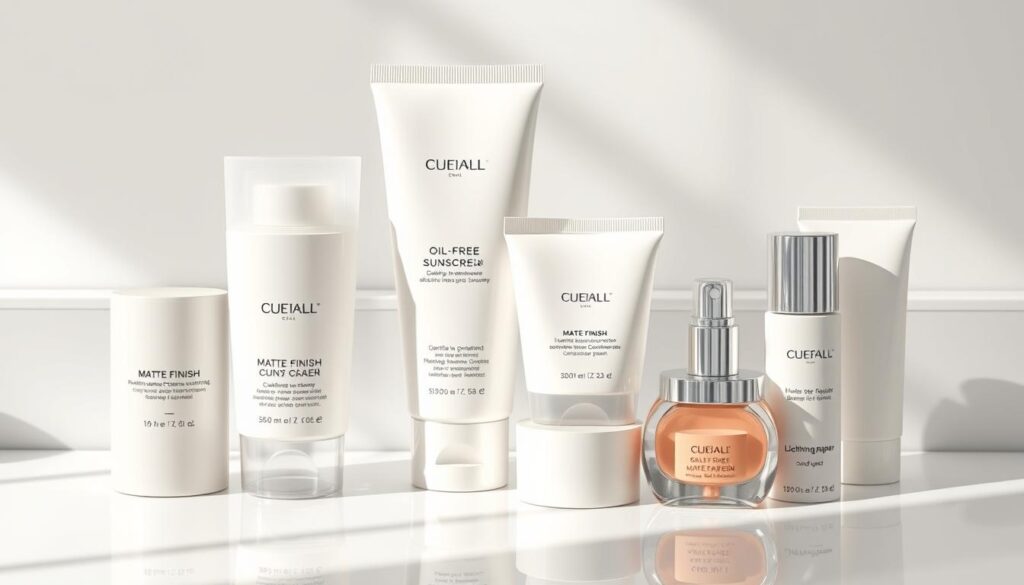Can you not seem to get rid of that shine on your face and has it got you blotting,washed and powdered at least twenty times cause you are placed in the middle of the desert??? Oily skin is one of those annoying struggles However, high-quality skin care products in a well-developed routine can help you combat excess oil and develop that all-natural matte shine. This guide will teach you tips on How to reduce shine on oily skin and stay looking fresh throughout your day.
Key Takeaways
- Choose gel cleansers that are high in pH to ensure your skin does not dry out and produce more oil.
- Add retinoids: Use something like tretinoin or a gentler retinol to help prevent both acne and clogged pores for clearer, less oily skin.
- Use water-heavy, oil-free moisturizers with ingredients such as hyaluronic acid or glycerin.
- There are masks that can reduce oil, minimize pores and breakouts without over-drying like clay or charcoal-based.
- Niacinamide serums work well for oily or acne-prone skin since they can help to balance sebum production and improve skin texture
Understanding Oily Skin and Sebum Production
Oily skin is characterized mostly by excess natural oil in theT-zone (forehead, nose and chin area) and therefore this skin type should not be uncommon. Approximately 66–75% of teenagers and young adults possess oily skin. Because of both genetics and the environment
The Role of Sebaceous Glands
Oily skin is due to the sebaceous glands. They are responsible for producing sebum, which is an oily substance that helps keep the skin moist and waterproof. Larger and more active glands translate to oilier skin.
Factors Affecting Oil Production
Some factors can affect just how much sebum you produce, which may include hormones, age, and even seasons. Being the primary male hormone, testosterone begets oilier skin for men. Also, the production of sebum increases during puberty, while for women, it decreases at menopause and for men, around the age of 60.
Genetic and Environmental Influences
Genetics can also make you prone to oily skin. Some people are born with larger sebaceous glands. The environment changes the development of oil on the skin. Warm and humid places make your skin produce more oil.
The oily skin does not mean that you will have acne. The quality of the sebum, along with other variables such as bacteria, inflammation, and their absence, all have a significant role in determining one’s breakouts. Oily skin can be managed with proper pore-minimizing treatments, oil-absorbing skincare, and an excellent sebum-regulating skincare routine.
Thus, one must understand the roots of oily skin to develop an effective skincare routine that controls shine and maintains a healthy, balanced complexion
“Understanding the underlying causes of oily skin is the first step towards developing an effective skincare routine to control shine and maintain a healthy, balanced complexion.”
Common Mistakes in Managing Oily Skin
Caring for oily skin mainly revolves around avoiding a few common mistakes. Over-cleansing is the first and foremost one. It takes away the skin’s natural oils, putting it into overdrive and producing even more sebum. Use a pH-balanced cleanser to take away excess oil without stemming the skin’s balance.
Another mistake people make is to avoid moisturizer, believing it only exacerbates oily skin. The truth is actually the complete opposite: failing to moisturize can result in even oilier skin. Lightweight, gel or water-based moisturizers contain active hydrating ingredients such as hyaluronic acid or glycerin that keep the skin moist without clogging pores
- Overuse of harsh, drying cleansers can strip the skin of its natural oils, leading to increased sebum production.
- Avoiding moisturizers entirely can trigger the skin to overproduce oil, resulting in a shiny, greasy appearance.
- Relying on oil-based products, even if they claim to be non-comedogenic, can clog pores and contribute to an oily complexion.
- Ignoring the importance of a balanced skincare routine, with a focus on oil control and hydration, can perpetuate the cycle of excessive oil production.
| Common Mistake | Percentage of People Affected | Impact on Oily Skin |
|---|---|---|
| Using drying cleansers | 60% | Increased oil production as a compensatory response |
| Skipping moisturizer | 45% | Dehydration leading to excess sebum secretion |
| Avoiding oil-based products | 35% | Missed opportunity to balance skin hydration and minimize shine |
| Imbalanced skincare routine | 75% | Perpetuation of the oily skin cycle |
By understanding and avoiding these common missteps, individuals with oily skin can take a more strategic approach to their skincare regimen. This helps manage shine and maintain a healthy, balanced complexion.
Essential Skincare Routine for Shine Control
Keeping a good skincare routine is key for oily skin and less shine. The right products and methods help you get a balanced, shine-free look. Here are the must-do steps for oily skin care:
Morning Routine Steps
- Start with a pH-balanced gel cleanser to get rid of extra oil and dirt without drying out your skin.
- Then, use a light, non-clogging moisturizer with hydrators like hyaluronic acid to keep your skin moist.
- End with a broad-spectrum sunscreen with SPF 30 or higher to shield your skin from UV rays.
Evening Routine Steps
- Double cleanse with a micellar water or oil cleanser to remove makeup and oil, then a gentle foaming cleanser to clean deep.
- Next, add a serum with niacinamide to control oil and refine pores.
- Follow with a retinoid or retinol product to speed up skin renewal, unclog pores, and stop breakouts.
- Moisturize with a non-clogging, oil-free cream to keep your skin hydrated without clogging pores.
Weekly Treatment Schedule
For an extra boost in your oily skin care, try these weekly treatments:
- Use a charcoal or clay face mask once or twice a week to soak up extra oil and shrink pores.
- Exfoliate with a gentle chemical exfoliant like salicylic acid or lactic acid to remove dead skin and smooth out texture.
- Apply a nourishing, overnight treatment with retinol or bakuchiol to help your skin renew and reduce shine.
By sticking to this detailed skincare routine, you can manage oily skin, cut down on shine, and get a glowing complexion.
How to Reduce Shine on Oily Skin
Well, managing oily skin is tricky but very doable with the proper steps. Focus on oily skin management and how to control excess oil production by having an effective skincare routine.
Begin with a light, pH-balanced cleanser to clean the face. This would help identify skin type and clear the face of dirt and oil. However, avoid over-washing as this may irritate the skin’s natural balance and lead to the production of oil. Use a product for mattifying, like micellar water or oil-control face wash, to clean the skin and matte it.
Exfoliation is essential for oily skin, but it needs to be done right, lest it dries out your skin. A scrub non-comedogenic or chemical exfoliant employed once or twice a week will help clean up the pores, removing dead skin from the top layer of your skin without drying out your skin.
Just like dry skin, oily skin needs moisturizing, too. Instead of oil-based ones, switch over to oil-free, water-based light moisturizers that can keep the skin hydrated and, at the same time, are non-greasy. Look for products with hyaluronic acid that will hydrate your skin without making it more oily.
Remember sun protection. Use a light, non-acnegenic sunscreen to block out UV rays without adding shine. Follow these tips, and you will keep your oily skin from getting overactive and reduce shine to achieve a balanced, healthy complexion.
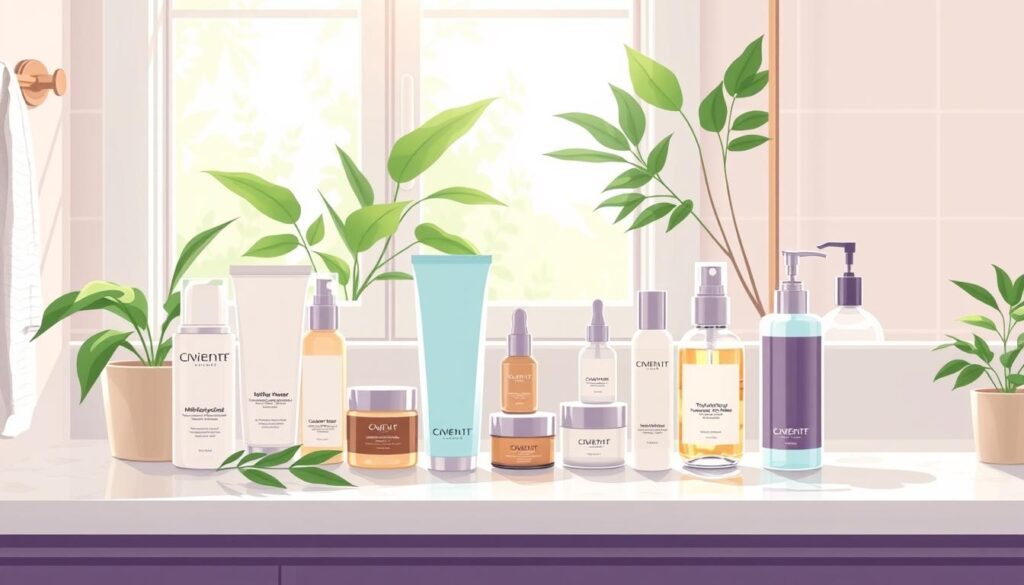
“Patience and consistency are key when it comes to managing oily skin. Give your skin time to adapt to a new routine, and it will reward you with a healthy, shine-free glow.”
Top Cleansers and Face Washes for Oily Skin
Managing oily skin can be tough, but the right cleansers help a lot. Look for pH-balanced gel formulas and oil-control ingredients. They remove excess sebum without drying out your skin.
Best pH-Balanced Gel Cleansers
Gel cleansers are great for oily skin because they clean deeply without upsetting your skin’s pH. Choose ones without harsh surfactants. Opt for soothing ingredients like aloe vera, green tea, and chamomile. Some top picks include:
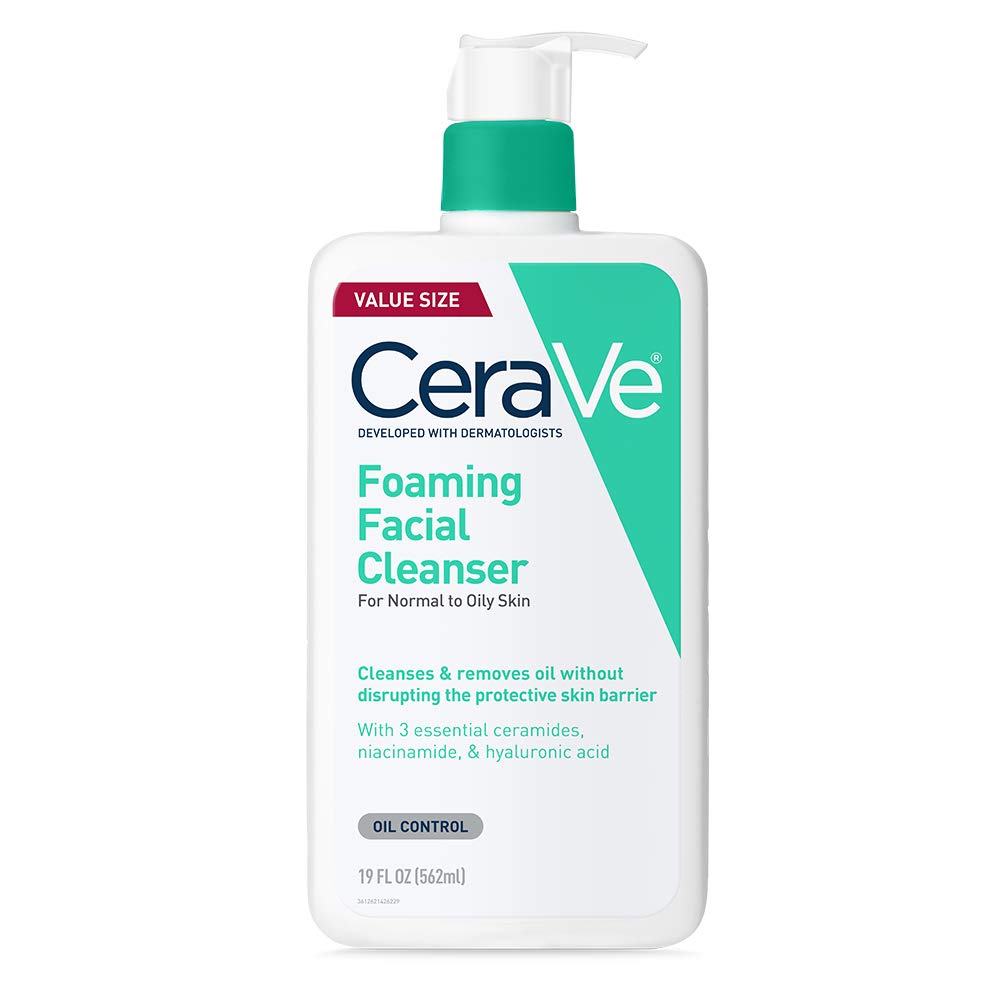
CeraVe Foaming Facial Cleanser
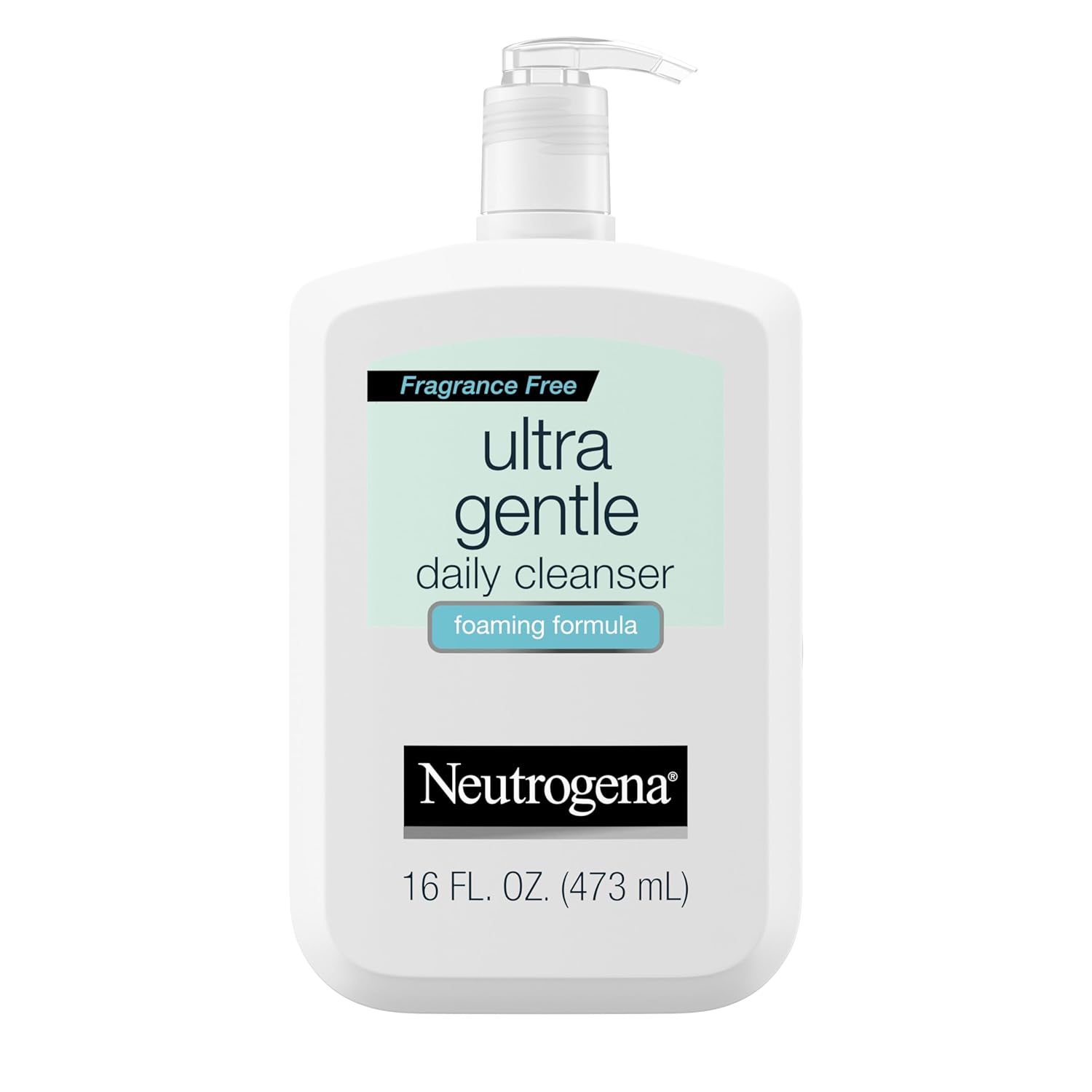
Neutrogena Ultra Gentle Daily Cleanser
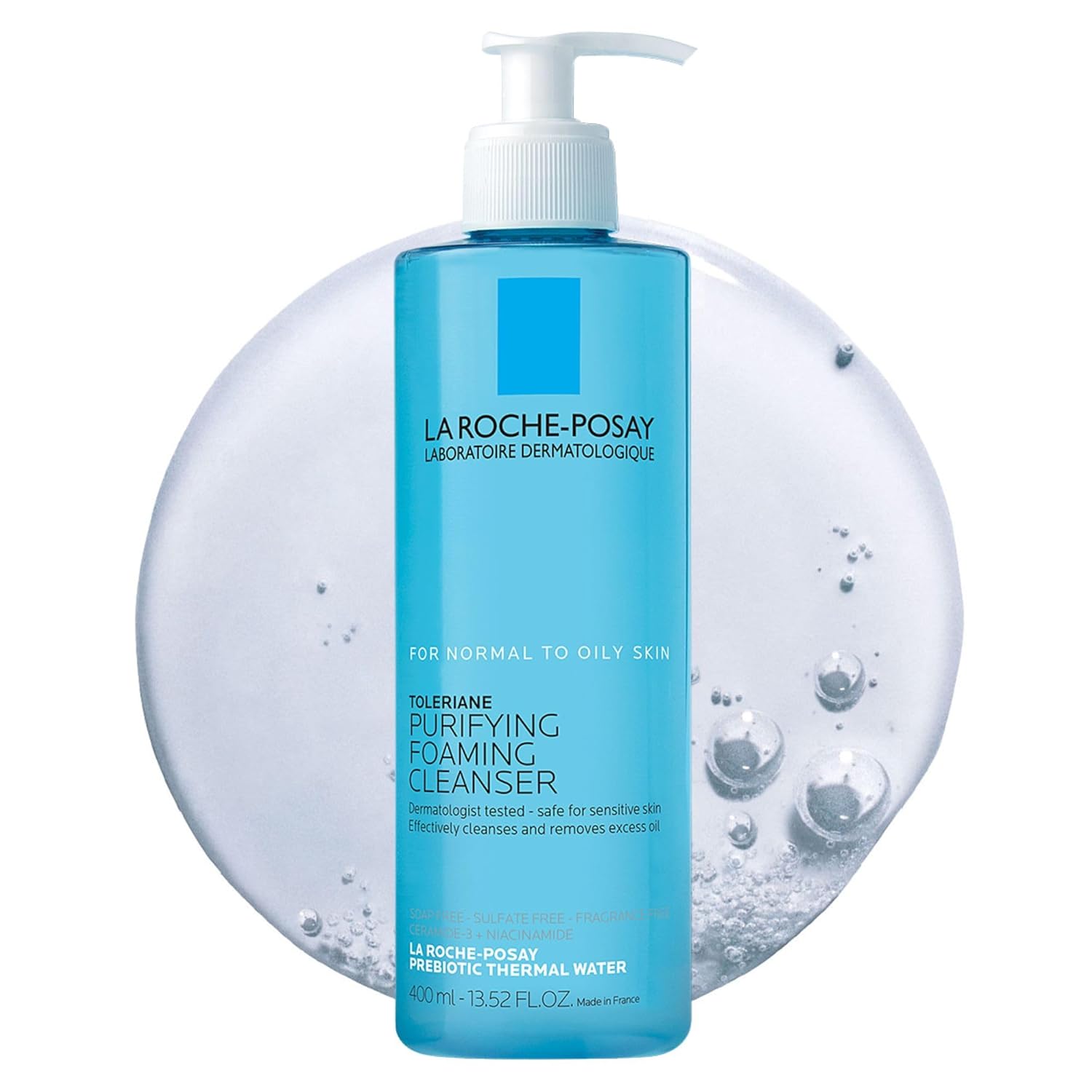
La Roche-Posay Toleriane Purifying Foaming Cleanser
Oil-Control Formulations
For extra oil absorption and smaller pores, try oil-control cleansers. They often have ingredients like salicylic acid, charcoal, and clay. These help control sebum and refine pores. Some great options are:
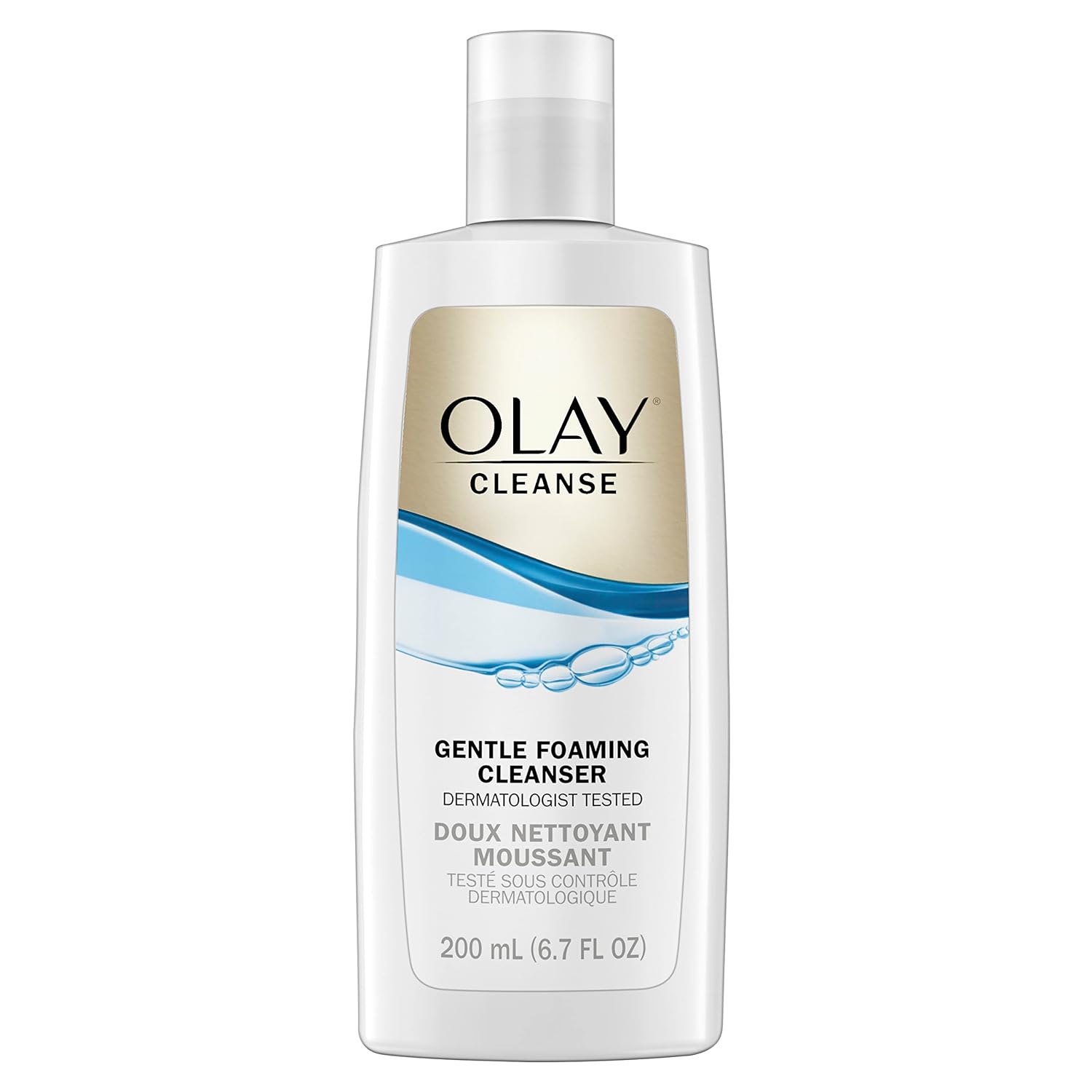
Olay Cleanse Gentle Foaming Cleanser
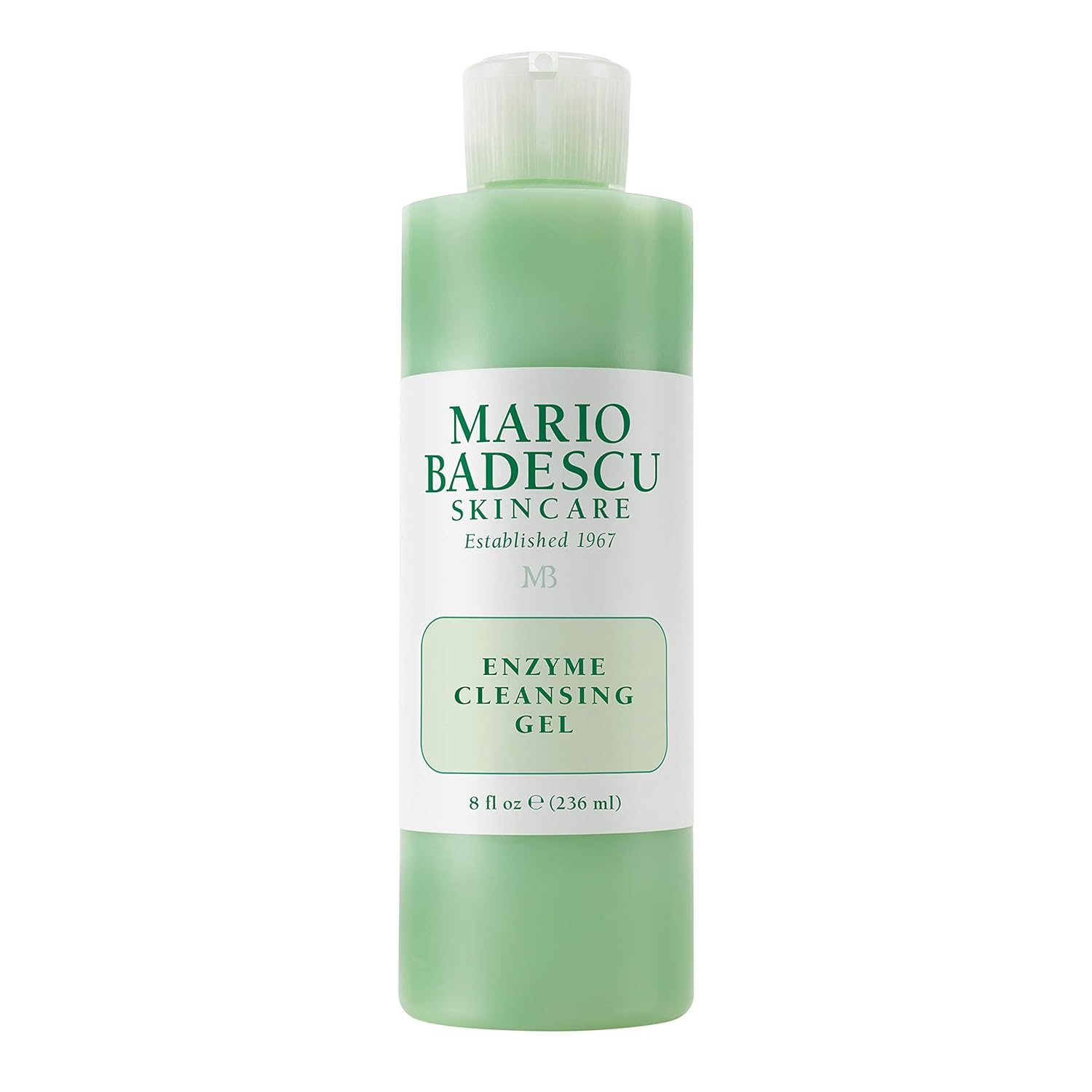
Mario Badescu Enzyme Cleansing Gel
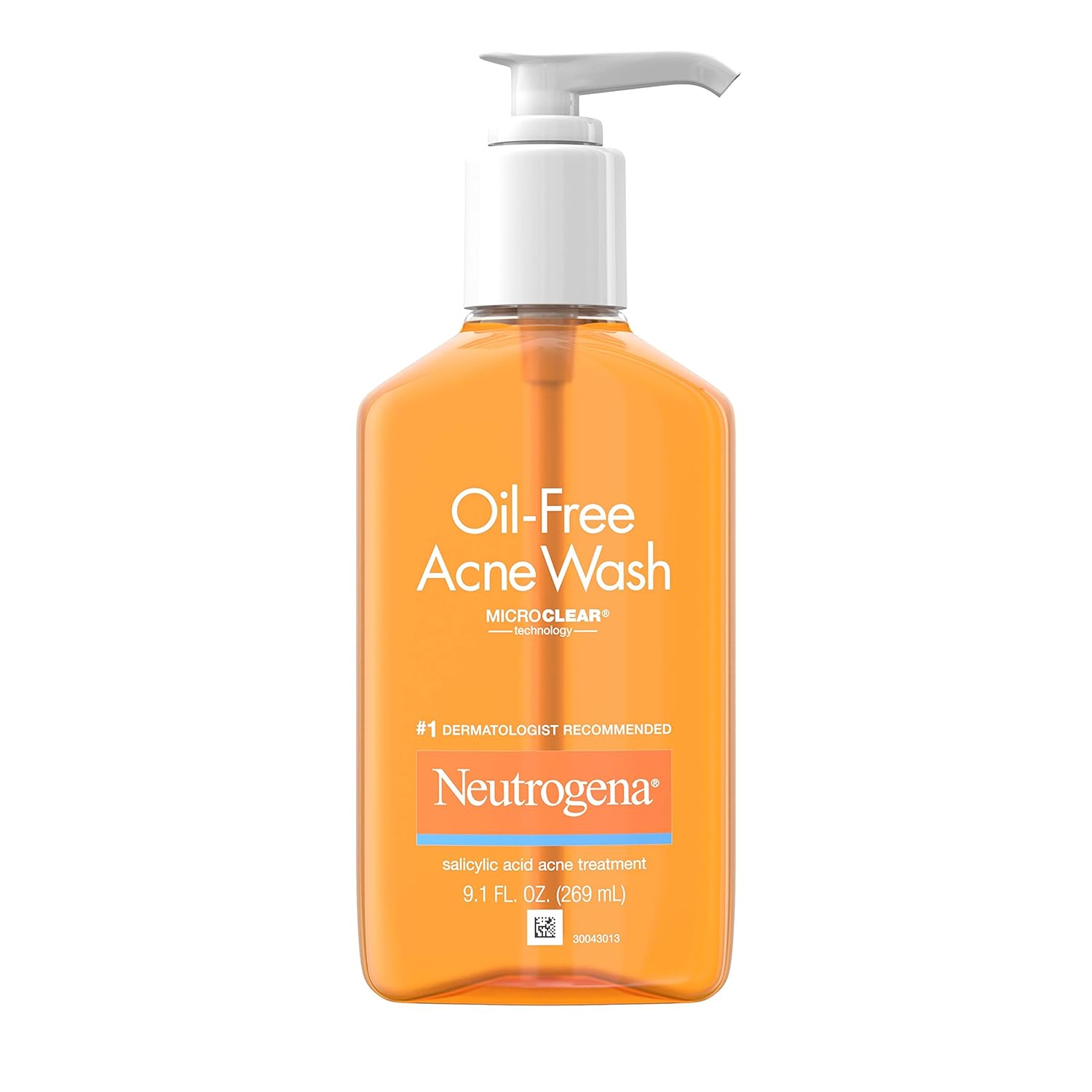
Neutrogena Oil-Free Acne Wash
While oil-control cleansers are helpful, don’t overdo it. Avoid harsh, drying cleansers. A gentle, balanced approach keeps your skin healthy and oil-free.
Advanced Treatment Products and Ingredients
An intelligent plan is called for to keep oily skin healthy and shine-free. Advanced products come in handy. It follows that after following the proper sebum-regulating skincare routine, the oil will be brought under control, and the pores will shrink.
The primary key is retinoids, such as tretinoin or retinol, because they encourage skin cell turnover and unblock the pores, hence preventing outbreaks. Also, the 5% niacinamide serum cuts oil and emboldens skin.
But salicylic acid, better known as beta-hydroxy acids, works really well in dissolving oil. It deeply goes inside the pores, clearing out sebum and dirt.
On the other hand, it is also best to have products that contain clay or charcoal in them. They absorb oil so your skin remains matte and shine-free all day.
And remember hyaluronic acid and glycerin allow your skin to stay hydrated without any addition of oil, and that is perfect for oily skin and oil-free makeup. Adding these anti-shine skincare ingredients to your routine can create a smooth, matte look. Make it a point to have a sebum-regulating skincare routine each day.
| Ingredient | Benefit |
|---|---|
| Retinoids (Tretinoin, Retinol) | Regulate skin cell turnover, unclog pores, and prevent acne |
| Niacinamide (5% concentration) | Reduce oil production and strengthen the skin barrier |
| Salicylic Acid (BHA) | Dissolve excess sebum and clear out impurities |
| Clay or Charcoal | Absorb oil and mattify the skin |
| Hyaluronic Acid, Glycerin | Provide hydration without adding excess oil |
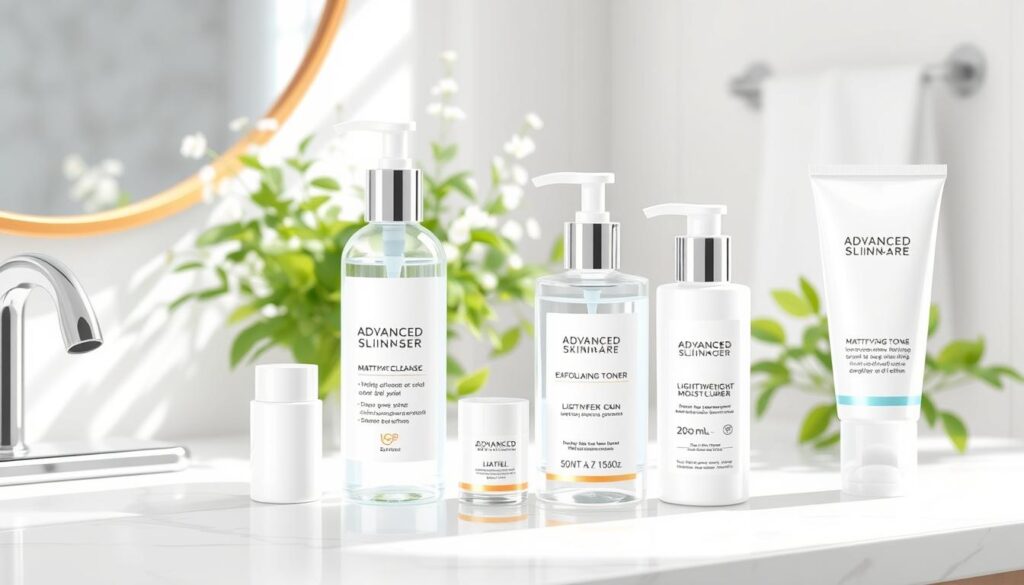
“Advanced treatment products can be game-changers for managing oily skin. By targeting the root causes of excess sebum production, you can achieve a more balanced, shine-free complexion.”
Makeup Tips and Products for Shine Control
For oily-skinned beauties, great makeup is the real game-changer. From primer to foundation, all the way to setting products-finishing touches, here are the ways to keep your skin matte and fresh.
Primer and Foundation Selection
When it comes to creating a shine-free base, trust in the power of oil-free primers and foundations. Look for products specifically designed for oil control, such as the L’Oréal Paris Prime Lab Up to 24H Matte Setter primer and the IT Cosmetics CC+ Cream Natural Matte Foundation with SPF 40. These high-quality products will set the perfect matte base for your makeup, ensuring a fresh look all day.
Setting Products and Techniques
TSetting Products and Methods Setting powders sets your makeup in place, keeps it there, and controls shine. One to try is IT Cosmetics Bye Bye Pores Poreless Finish Loose Setting Powder. It contains vitamin E and collagen that help improve fine lines and pores.
For quick touch-ups, keep oil-absorbing sheets or blotting papers handy. These convenient tools will help you blot away excess oil without disturbing your carefully applied makeup, keeping your oily skin shine-free all day.
For a long-lasting matte finish, lightly apply setting powder to the T-zone. Then, seal your look with a setting spray like Urban Decay All Nighter Ultra Matte Setting Spray. This powerful product can extend the wear of your makeup for up to 16 hours, giving you the confidence of a shine-free complexion all day long.
Natural Remedies and DIY Solutions
Dealing with oily skin can be tough. There are many products out there, but natural remedies and DIY solutions work well too. They help control oil and give you a matte look. Here are some top tips for oily skin care and shine-free skin you can try at home.
Clay Masks for Oil Absorption
Try clay masks with bentonite or kaolin clay once a week. These clays soak up impurities and excess oil. Your skin will feel refreshed and look shine-free.
Balancing Toners and Astringents
Use apple cider vinegar as a toner to balance your skin’s pH and control oil. Green tea can also be used as a facial mist. It tightens pores and reduces shine.
Gentle Exfoliation with Oatmeal
Make a DIY oatmeal mask for gentle exfoliation and oil absorption. Oatmeal soothes and exfoliates, removing excess oil and dead skin.
Hydrating with Aloe Vera
Aloe vera gel is a light, natural moisturizer. It controls oil without clogging pores. Use it to hydrate your skin without feeling greasy.
Spot-Treating with Tea Tree Oil
For targeted oil control and acne, use tea tree oil as a spot treatment. Its antibacterial properties fight breakouts and reduce blemishes.
Remember, natural remedies and DIY solutions work differently for everyone. Always test new ingredients before using them fully. Gentle, consistent care is essential for managing oily skin and getting a beautiful, shine-free complexion.
Professional Treatments and Medical Options
If you’re dealing with oily skin, it’s time to see a dermatologist. They can offer tailored solutions for your skin problems. This includes treatments and medications to control oil production.
Dermatologist-Recommended Procedures
Dermatologists suggest various procedures to reduce shine and enhance oily skin’s look. Some common ones are:
- Chemical Peels: These use acidic solutions to exfoliate, unclog pores, and control oil.
- Microdermabrasion: It mechanically removes the skin’s top layer, making it smoother and less shiny.
- Laser Therapies: Advanced lasers target and shrink sebaceous glands, reducing oil.
Prescription Medications
For severe oily skin and acne, your dermatologist might prescribe certain medications. Some common ones are:
- Spironolactone: This oral drug blocks hormones that cause too much oil.
- Accutane (Isotretinoin): A strong retinoid that greatly reduces sebum, but needs close monitoring.
It’s important to keep up with your dermatologist’s advice. They can adjust your treatment as your skin changes. With their help, you can manage oily skin effectively.
“Consulting a dermatologist is the best way to address persistent oily skin issues and find personalized, long-term solutions.”
Conclusion
Managing oily skin and reducing shine needs a consistent, tailored approach. Use a balanced skincare routine with the right products. This includes gel-based cleansers, clay masks, oil-control primers, and chemical exfoliants.
Remember, some oil is good for healthy skin. So, aim for balance, not complete elimination.
Be patient with your oily skin care journey. It may take time to see big improvements. Regularly check and adjust your routine to keep your skin in check.
Use lifestyle tips like staying hydrated and avoiding over-washing. Managing stress also helps your skin’s health and oil regulation.
By tackling oily skin’s root causes, you can lessen shine and breakouts. Achieve a refined, matte look. Use oily skin care tips, products, and treatments that fit your skin type and needs for a healthy glow.
FAQ
What is the role of sebum in the skin?
Sebum is the skin’s natural oil. It helps keep the skin healthy and hydrated. But, too much oil can make the skin look shiny, when mixed with sweat, dirt, and dead skin cells.
What factors influence oil production in the skin?
The amount of oil in your skin depends on your genes and the season. If you have bigger and more active sebaceous glands, you’ll have greasier skin.
Does oily skin always lead to breakouts?
Oily skin doesn’t always mean you’ll get breakouts. Acne is caused by many things. In acne-prone skin, the quality of sebum is different, which can lead to skin problems.
How can over-cleansing affect oily skin?
Washing your skin too much can take away its natural oils. This makes your skin produce more oil. Using a cleanser that’s pH-balanced helps control oil while keeping your skin moist.
Why is it important to use a moisturizer for oily skin?
Many people with oily skin skip moisturizer, but this can make oil production worse. Use light, gel-based, or water-based moisturizers. They should have ingredients like hyaluronic acid or glycerin to hydrate without clogging pores.
What should a proper skincare routine for oily skin include?
For oily skin, clean twice a day with a pH-balanced gel cleanser. Use retinoids to control skin cells and prevent acne. Choose a light, non-comedogenic moisturizer. Apply a charcoal or clay mask once or twice a week. Don’t forget niacinamide (vitamin B3) to cut oil production and strengthen your skin.
How can I reduce shine on my oily skin?
To cut shine, focus on keeping your skin hydrated. Use water-based products like gels, tonics, serums, and lotions. Hyaluronic acid helps hydrate without leaving oil. Pick non-comedogenic formulas to avoid clogged pores and acne.
What type of cleansers are best for oily skin?
For oily skin, choose pH-balanced gel cleansers. They clean well without harming your skin barrier. Look for oil-control formulas that remove excess sebum without drying your skin. Enzyme-based cleansers gently exfoliate and manage oiliness and large pores.
What other skincare ingredients can help control oil production?
Add retinoids (tretinoin or retinol) to regulate skin cells and prevent acne. Use niacinamide serums to reduce oil and strengthen your skin. Salicylic acid or beta-hydroxy acid (BHA) products dissolve oil. Look for products with clay or charcoal for their oil-absorbing benefits.
What makeup tips can help control shine on oily skin?
Pick oil-free, non-comedogenic primers and foundations for a matte base. Use long-wearing, oil-control makeup that absorbs sebum all day. Apply setting powders or translucent powders to keep makeup in place and control shine. Use blotting papers or oil-absorbing sheets for touch-ups.
Are there any natural remedies for oily skin and shine control?
Yes, try natural remedies like clay masks to absorb oil. Use diluted apple cider vinegar as a toner to balance skin pH. Green tea can be used as a facial mist for its astringent properties. Make a DIY oatmeal mask for gentle exfoliation and oil absorption. Aloe vera gel is a light, natural moisturizer. Tea tree oil (diluted) has antibacterial properties good for acne-prone oily skin.
When should I see a dermatologist for oily skin issues?
See a dermatologist for ongoing oily skin problems. They can offer treatments like chemical peels, microdermabrasion, or laser therapies. They might prescribe Spironolactone or Accutane for severe cases. Dermatologists can create a personalized skincare plan and recommend medical-grade products.

